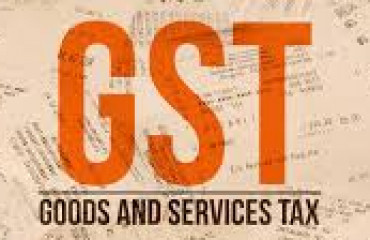
PL Capital predicts the Nifty will reach 27,609 in 12 months, driven by factors like lower inflation and GST 2.0 reforms. The report highlights a durable demand upcycle and emphasizes the importance of reviving consumption for India's growth trajectory.
PL Capital, in its India Strategy Report titled "Ready for next leg of growth," projects the Nifty to reach 27,609 over the next 12 months. The brokerage argues that multiple tailwinds—lower inflation, normal monsoons, fiscal support, RBI rate-cut transmission, and GST 2.0 reforms—are set to lift domestic consumption beyond the festive season and support earnings.
Why PL Capital is bullish: demand catalysts
PL Capital sees the setup for a durable demand upcycle: CPI at 1.6% with food deflation, normal monsoons supporting rural incomes, and a ₹1,000 bn tax-cut impulse in FY26. Momentum, it says, should strengthen in 2H26 as the RBI's 100 bps of rate cuts transmit, lowering EMIs and stoking demand for housing, automobiles, and personal loans.
Complementing this is GST 2.0 rate rationalisation, which is expected to reduce prices across automobiles, durables, staples, and medicines—further broadening consumption. The report adds that reviving consumption is critical to sustaining India's growth trajectory and, under the vision for 'Atamnirbhar Bharat'—with emphasis on GST reforms, defence initiatives, support to agriculture, youth employment, and energy security—the current US tariff challenge can be turned into a longer-term opportunity.
Market resilience—and the risks
Despite penal US tariffs and FII outflows of ₹410 bn, Indian equities have been largely flat since early July. Corporate performance has been "reasonable," with sales, EBITDA, and PAT deviating from expectations by just 2%, 0.9%, and -0.5%, respectively. Still, PL Capital cautions that fragile geopolitics and continued US tariff actions threaten global trade and GDP growth as the full impact of higher import duties plays out.
The valuation math behind 27,609
PL Capital has trimmed Nifty EPS estimates by -1.4%/-0.4% for FY26/FY27, but still expects a 13.2% CAGR over FY25–27, with EPS at ₹1,254/ ₹1,445. On valuations, Nifty trades at 18.9x one-year forward EPS—about a 1% discount to its 15/10-year average PE of 19.1x. Applying 19.1x to March '27 EPS of ₹1,445 yields the 12-month Nifty target of 27,609 (vs 26,889 earlier at 18.6x FY27 EPS). Structural themes in defence, infrastructure, EMS, hospitals, and power transmission remain intact, though PL Capital sees limited scope for further re-rating from here.
Model portfolio stance
The brokerage stays overweight Banks, Healthcare, Consumer, Telecom, Auto, and Capital Goods, and underweight IT Services and Commodities. Reflecting its consumption revival view, it raised weights in Automobiles and Consumer, while trimming exposure to Capital Goods, Healthcare, and Banks—which nonetheless remain overweight sectors.
GST 2.0: lower prices to boost demand
Introduced on 1 July 2017, GST unified multiple indirect taxes and has become the largest contributor to indirect tax revenues, with collections rising from ₹11,770 bn in FY2018–19 to a record ₹22,080 bn in FY2024–25. The Government is preparing GST 2.0, focused on rate rationalisation: reducing the current 5%, 12%, 18%, 28% structure to mainly 5% and 18%. Most items at 12% would move down to 5% (a few up to 18%); most non-luxury goods at 28% would shift to 18%, with only a limited set adjusted higher or lower based on whether they are luxury or essential.
The most significant changes will come from the 12% and 28% slabs (together ~16% of GST collections), while the 18% slab (about 67% of revenues) remains unchanged. Petrol, diesel, liquor, and electricity are unlikely to be brought under GST 2.0. Overall, PL Capital expects simplification, fewer classification disputes, and a consumption boost from a lower tax burden on everyday goods.
Disclaimer: The views and recommendations made above are those of individual analysts or broking companies, and not of Mint. We advise investors to check with certified experts before making any investment decisions.
